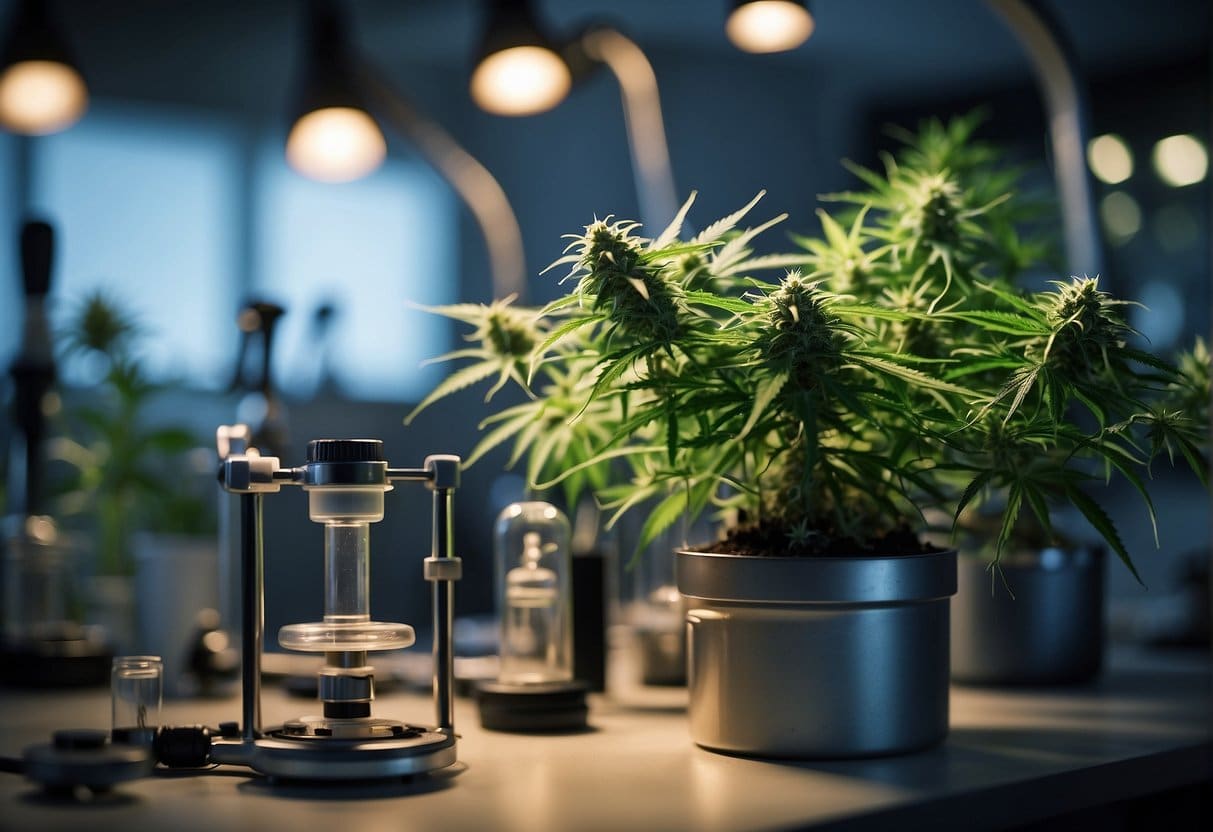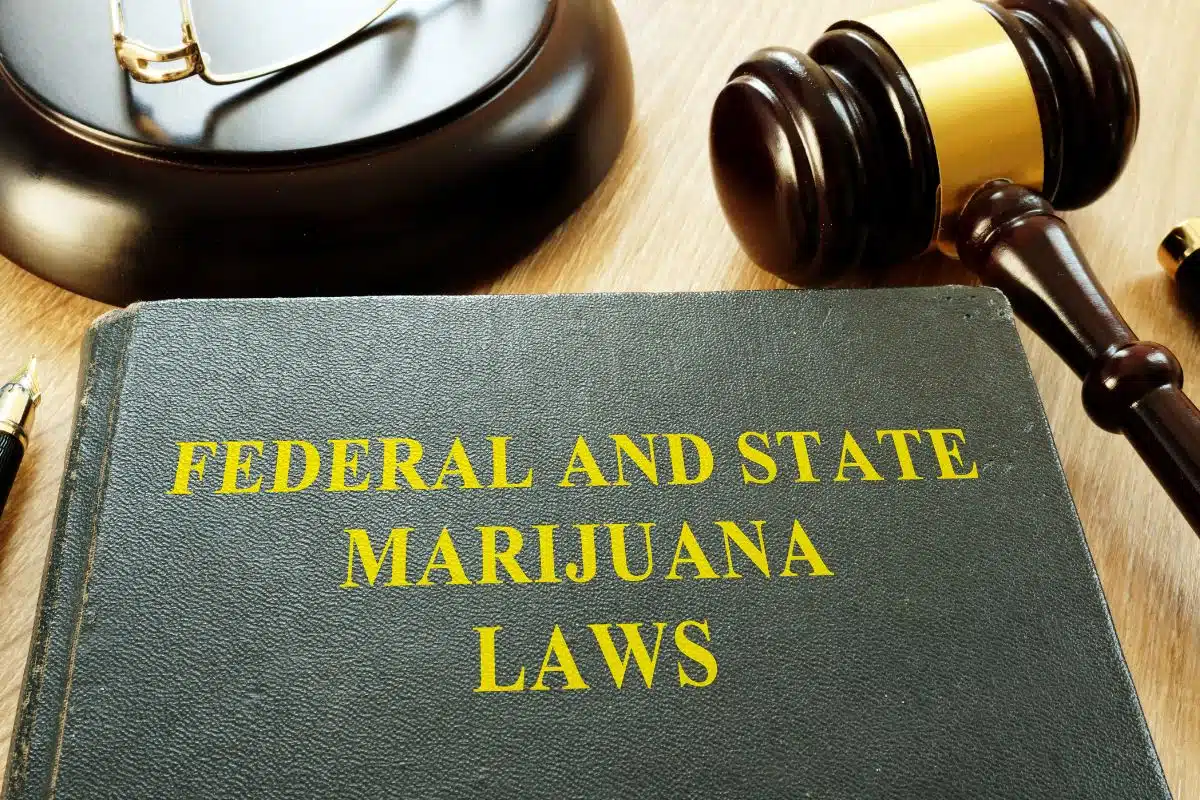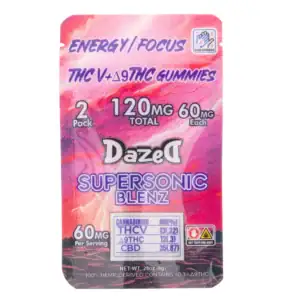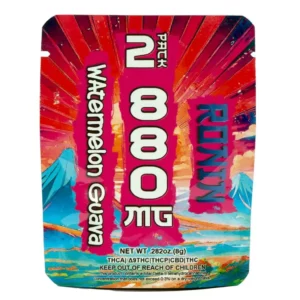Can I Smoke Delta 8 on a Tolerance Break: Understanding the Implications
Curious about taking a break from weed? Wondering if Delta 8 smokes could fill in the gap while you’re laying off the usual? When you decide on a “T-break,” you’re basically letting your body’s cannabinoid receptors snooze for a bit. When you come back to THC, you might find it hits harder than before. The length of your break? That’s totally up to you. But the real question is, why take a break? It boils down to letting your system crave those cannabinoids again, making your return feel even more awesome. Keep reading to find out why Delta 8 might just be the perfect substitute during your break.
- Understanding Tolerance and Its Mechanisms
- Delta 8 THC: An Overview
- The Concept of Tolerance Breaks
- Delta 8 Usage During Tolerance Breaks
- Practical Considerations for Delta 8 and Tolerance Breaks
- Maximizing Benefits While Preventing Tolerance Buildup
- Health Considerations and Safety
- Potential Risks of High THC Consumption
- Understanding Delta-8's Legal Status
- Frequently Asked Questions
- Is it advisable to use Delta-8 to ease withdrawal symptoms during a tolerance break?
- How does Delta-8 THC affect tolerance levels compared to Delta-9 THC?
- What are the potential legal implications of driving under the influence of Delta-8?
- How long does Delta-8 THC typically remain detectable in a drug test?
- Are there any known side effects associated with consuming Delta-8 while on a tolerance break?
- What alternatives to smoking are available for Delta-8 consumption during a tolerance break?
Delta 8-tetrahydrocannabinol, often referred to as Delta 8, is a minor cannabinoid that occurs in cannabis plants in very low concentrations. It is chemically similar to Delta 9-THC, the primary psychoactive component found in marijuana, but it is typically less potent. Some individuals consider Delta 8 as an option when taking a hiatus from standard THC products due to its milder effects and legal status in certain regions.
Understanding how Delta 8 may affect your tolerance break is key. Even though it is less potent, Delta 8 binds to the same cannabinoid receptors in your brain as Delta 9-THC, and thus, has the potential to sustain some level of tolerance. It’s important to evaluate your goals for the tolerance break and decide if introducing a different, albeit similar, cannabinoid aligns with the purpose of your break.
Understanding Tolerance and Its Mechanisms
When you consume cannabis products like Delta 8 THC regularly, your body may develop tolerance, which can influence the effects you feel. Tolerance occurs when your body becomes less responsive to a substance over time, necessitating a larger amount to achieve the initial effect.
The Role of Endocannabinoid System in Tolerance
Your body’s endocannabinoid system (ECS) plays a crucial role in the development of tolerance to cannabinoids such as THC. The ECS consists of cannabinoid receptors (CB1 and CB2), and endocannabinoids, which are molecules that bind to these receptors to regulate various physiological processes. When you ingest cannabinoids like Delta 8 THC, they mimic endocannabinoids and bind to the CB1 and CB2 receptors, primarily found in the brain and other parts of your body. Repeated activation of these receptors by THC can lead to a state of reduced efficacy, known as tolerance.
Tolerance Buildup and Receptors Interaction
The interaction between cannabinoids and the receptors in your ECS is integral to how tolerance builds up. With persistent stimulation by THC, your CB1 receptors may become desensitized or internalized, meaning they are less responsive or fewer in number on the cell surface. This requires you to consume more Delta 8 THC to feel the same effects, a clear sign of THC tolerance. Additionally, your body may reduce the production of endocannabinoids as it adapts to the increased cannabinoid intake, further affecting the system’s balance. Remember, the body seeks to maintain homeostasis, and the alterations in receptor availability and endocannabinoid levels are your body’s attempts to balance the effects of continuous cannabinoid exposure.
Delta 8 THC: An Overview

When considering a tolerance break from THC, it’s vital to understand the nuances of Delta 8 THC, a cannabinoid similar to the more well-known Delta 9 THC, but with distinct properties and effects on your body.
Comparing Delta 8 THC to Delta 9 THC
Delta 8 THC and Delta 9 THC are both cannabinoids found in cannabis plants. The main difference lies in their chemical structures, which affects how they interact with your body’s endocannabinoid system.
- Psychoactive Elements: While both are psychoactive, Delta 9 THC is significantly more potent than Delta 8.
- Legality: Delta 8 THC often falls into a gray area of legality and may be available in places where Delta 9 THC is not.
- Anxiety and Paranoia: Users often report that Delta 8 causes less anxiety and paranoia, which are more commonly associated with high doses of Delta 9 THC.
Effects of Delta 8 THC on the Body
Delta 8 THC’s effects are typically milder compared to Delta 9 THC. However, it still exerts noticeable effects on your body, including:
- Appetite Stimulation: Similar to Delta 9, Delta 8 THC can stimulate your appetite.
- Cognitive Effects: You might experience alterations in perception, mood, and cognitive functions.
- CBD Products: Unlike CBD products, which are non-psychoactive, Delta 8 THC can induce psychoactive effects, though they are less intense than those of Delta 9 THC.
The Concept of Tolerance Breaks
Engaging in tolerance breaks, or “T-breaks”, is a deliberate pause from cannabis consumption to mitigate tolerance buildup and enhance the efficacy of its effects upon return. This reset is essential for frequent users to maintain sensitivity to cannabis’s active components.
The Purpose of Taking a Tolerance Break
Tolerance breaks are often initiated to combat the diminishing effects you might experience due to regular cannabis use. The primary aim of a T-break is to reset your endocannabinoid system, which can reduce the need for increasing doses to achieve desired effects. By doing so, you can maintain a minimum dose with maximum benefits, promoting sustainable usage and potentially reducing side effects.
Recommended Duration and Strategies
When considering a tolerance break, mark your calendar for a waiting period typically ranging from a few days to several weeks, depending upon personal consumption patterns and goals. Short tolerance breaks might last just 48 hours, while more extended periods could span up to a month or longer.
- Short Tolerance Breaks:
- Duration: 2-3 days.
- Objective: Brief reset for occasional users.
- Longer Tolerance Breaks:
- Duration: 2 weeks to 1 month.
- Objective: Significant reset for heavy users.
Implementing a strategy is critical for a successful tolerance break. Here’s what you can do:
- Plan Ahead: Choose start and end dates for your break.
- Gradual Reduction: Taper your usage before stopping completely to ease potential withdrawal symptoms.
- Stay Busy: Engage in activities to distract from urges—exercise, pursue hobbies, or socialize without cannabis.
- Support System: Inform friends for accountability.
- Reflect: Use this time to evaluate your relationship with cannabis.
Delta 8 Usage During Tolerance Breaks

When considering whether to use Delta 8 during a tolerance break, it’s important to understand its potential impact on your endocannabinoid system and how it might differ from other THC products.
Pros and Cons of Using Delta 8 on a Break
Pros:
- Reset the Balance: Delta 8 might offer a milder experience compared to Delta 9, potentially allowing your system to decrease THC tolerance.
- Endorphin Interaction: It might also engage with endorphins in a different way, reducing the chance of developing a cross-tolerance.
Cons:
- Delta-8 Tolerance Research: There is limited research on Delta 8 and tolerance breaks, so the actual effect on tolerance is not as clear-cut.
- Cross-Tolerance Risks: Despite being different, Delta 8 can still contribute to cross-tolerance, potentially undermining the goal of your tolerance break.
Impact on Endocannabinoid Balance
Resetting Your System: Using Delta 8 while on a break might not provide the complete reset you’re aiming for since it can still bind to the same cannabinoid receptors as Delta 9, albeit with less intensity.
Research Insights: Be mindful that the long-term impact of Delta 8 on the endocannabinoid system is not yet fully understood due to a lack of extensive study. This underscores the need for caution if you choose to smoke Delta 8 during a break.
Practical Considerations for Delta 8 and Tolerance Breaks
When considering a tolerance break from cannabis, you may wonder about incorporating Delta 8. The idea is to manage your consumption in a way that restores your body’s sensitivity to cannabinoids.
Deciding the Right Doses During a Break
During a tolerance break, your primary goal is to reset your body’s response to cannabis. If you choose to use Delta 8, it’s crucial to carefully adjust your doses. Since Delta 8 THC has a lower psychotropic potency than Delta 9 THC, you may be tempted to use large doses. Start with small doses if you decide to consume Delta 8 and observe how your body reacts. For some individuals, even minimal quantities could slow down the tolerance reduction process.
- Low Dose Range:
- 5-15mg per serving
- Moderate Dose Range:
- 15-45mg per serving
- High Dose Range:
- 45mg+ per serving
Respect your body’s changing sensitivity levels and avoid using increasingly higher doses as it defeats the purpose of the break.
Identifying Signs of High Tolerance
As a cannabis user, being aware of the signs that suggest you have developed high tolerance can help you better plan your tolerance break. If you find yourself needing to take larger doses to experience the desired effects, or if the effects are noticeably shorter in duration, your tolerance may be high. This diminished response indicates it’s time to pause and potentially use only small and infrequent amounts of Delta 8, or none at all, to allow your sensitivity to reset.
- Signs of High Tolerance:
- Need for larger quantities of cannabis to achieve effects
- Reduced duration of effects
- Experiencing fewer effects even with habitual use
Remember, reintroducing cannabinoids slowly and being conscious of your body’s reaction is key to maintaining the benefits of your tolerance break.
Maximizing Benefits While Preventing Tolerance Buildup

To maintain the efficacy of THC products and avoid developing a cannabis tolerance, consider how often you’re using and the methods of consumption. These strategic adjustments can sustain the desired benefits for mood enhancement and other therapeutic effects.
Moderation and Frequency of Use
If you’re a frequent user of THC products, the key to preventing tolerance buildup is moderation. This entails not only reducing the amount you consume per session but also increasing the intervals between sessions.
- Monitor consumption: Keep a log to track usage patterns.
- Set limits: Establish a maximum number of uses per week.
By consciously managing your frequency of use, you increase the likelihood of maintaining THC sensitivity and the positive mood changes associated with its use.
Alternative Consumption Methods
Exploring different methods of THC consumption, such as edibles or tinctures, can influence tolerance development and the intensity of effects.
- Edibles: The onset is slower, but effects last longer, potentially reducing the need for frequent use.
- Tinctures: Allow for precise dosing and can be easily integrated into a regimen with controlled amounts.
By diversifying your consumption methods, you can find a balance that keeps your body’s THC receptors responsive, thereby enhancing the benefits of THC without the swift buildup of a tolerance.
Health Considerations and Safety
When considering a tolerance break from cannabis products like marijuana or weed, it’s crucial to understand the health implications and legal aspects of substances such as delta-8-THC. This cannabinoid, derived from hemp plants, offers potential therapeutic benefits but also poses risks if not used responsibly.
Potential Risks of High THC Consumption
Delta-8-THC is a psychoactive compound that can produce effects similar to delta-9-THC, the main psychoactive component in cannabis. Consuming high levels of THC can lead to tolerance, where you might find the need to increase dosage to achieve the same effect. Physical and mental health risks associated with high THC consumption include:
- Cognitive Impacts: Problems with memory, concentration, and decision-making.
- Mental Health: Increased anxiety, paranoia, or exacerbation of preexisting mental health conditions.
Health experts suggest moderation when considering THC for medicinal use, warning that chronic smoking may not increase break frequency. It’s important to be mindful of the dose-dependent effects of smoked cannabis which can influence pain sensitivity and other sensitivities in the body.
Understanding Delta-8’s Legal Status

The legality of delta-8-THC differs by state and country, primarily because it’s synthetically derived from CBD, which is itself extracted from federally legal hemp plants. As of the knowledge cutoff in 2023, delta-8 is in a legal gray area:
- Federal Level: Delta-8 derived from hemp is technically legal due to the 2018 Farm Bill. However, the Bill stipulates that hemp extracts should not contain more than 0.3% delta-9-THC.
- State Level: Some states have explicitly banned delta-8 products, regardless of the federal stance.
Always verify the legal status of delta-8 in your region before purchasing or using it during a tolerance break to ensure you are in compliance with state laws and regulations.
Frequently Asked Questions
Before diving into specific inquiries, it’s crucial to note that Delta-8 THC is a psychoactive compound similar to Delta-9 THC, yet it’s typically less potent. Understanding its effects and legality is essential during a tolerance break.
Is it advisable to use Delta-8 to ease withdrawal symptoms during a tolerance break?
Using Delta-8 THC may alleviate some withdrawal symptoms due to its milder psychoactive effects. However, its efficacy can vary, and it might impact your tolerance reset process.
How does Delta-8 THC affect tolerance levels compared to Delta-9 THC?
Delta-8 THC is often considered less potent than Delta-9 THC, which could lead to a slower increase in tolerance. Nonetheless, it still activates similar receptors in the brain, and its long-term impact on tolerance is not fully understood.
What are the potential legal implications of driving under the influence of Delta-8?
Driving under the influence of Delta-8 can lead to legal repercussions similar to driving under the influence of Delta-9 THC or alcohol, as it may impair your driving ability.
How long does Delta-8 THC typically remain detectable in a drug test?
Delta-8 THC may remain detectable in the body for up to a few days to several weeks, much like Delta-9 THC, depending on usage patterns and individual metabolism.
Are there any known side effects associated with consuming Delta-8 while on a tolerance break?
Consuming Delta-8 might result in side effects such as dry mouth, red eyes, and short-term memory impairment. Using it during a tolerance break may modify the break’s effectiveness.
What alternatives to smoking are available for Delta-8 consumption during a tolerance break?
Alternatives to smoking Delta-8 include edibles, tinctures, and topicals. These methods avoid inhalation but still deliver Delta-8 THC to your system.











